|
||||||||||||||||||||||||||||||||||||||||||||||||||||||||||||||||||||||||||||||||||||||||||
|
|
|
|
http://www.pole2pole2000.com/ 6 - 25 June 2000 While the team is continuing to travel across the heart of Canada, Martyn Williams, the inventor of this entire great adventure, and a polar region specialist whom Alain Hubert met last winter in Patriot Hills, has drawn up an interesting initial balance sheet of this original experience: In a few days' time, the group should be arriving in Ottawa, by way of Toronto. There they will take part in a major national event, one of the main celebrations of the millennium organised by the Canadians. An operation entirely devoted to the 18-24 age group and organised by it. 13 May - 3 June 2000 12 May 200 They had only had 5-hours' sleep, poor devils! And at each stop on the ice, at least one of them fell asleep on their ski sticks… Why such exhaustion? Because they had already been on the ice for several weeks and, despite their intensive training, these young people are not hardened adventure pros. So there, in any event, the first 500 km of their journey, which in all amounts to 33,000 km, are in the bag. They arrived at Resolute Bay on 05 May with the final days being transformed into a real race against the clock (so as not to waste too much time on the way): 18-hour's walking per day and barely 5-hours' sleep. On the other hand, we still receive with as much interest as ever the observations from this nice young group on the environments that they cross: "In this area", they wrote as they approached Resolute, "the thickness of the ice has been reduced by 50% in 20 years as a result of global warming." It is in this way, from little touches sketched by one or other person from a particular corner of the planet, that one can comprehend and approach this terrible reality: man's activity is contributing to global warming. And from now on this phenomenon will be visible to everybody. After a well-deserved rest, as they say, they will be flying off to the West to reach the Dempster Highway, the most northerly road in Canada, on which they will be cycling. Their departure from Inuvik is envisaged for 11 May.
Although the Pole to Pole 2000 group was trapped under canvas for two days during Saturday 15th and Sunday 16th April and the temperature is warming up (hence serious problems drying out sleeping bags), the young men have made good progress over relatively flat ice - in any event, much flatter than the ice encountered by the polar travellers on other expeditions. In their message of 20th April, they explained their method of locating the direction when their compass - with the needle spinning wildly on account of their proximity to the North Pole - was not working. "We use the position of the sun in the sky, " they explained. " At 6 in the morning, as the sun is in the east, we take the direction at 90º to it. On the other hand, during the afternoon, as the sun is in the south, we head in its direction and have it in our eyes for the remainder of the day..." Sunday 25th April, the expedition is brought fresh supplies by a Twin Otter flight from Resolute Bay. In addition to food and replacements for broken equipment (tents torn by the wind, broken skis, unstuck skis layers, etc), two people joined the team, a female Canadian and an Eskimo. As well as a skidoo that will be able to help the group make its way towards Resolute Bay and carry part of the equipment that the adventurers had been hauling painfully aboard their sledge, each of which weighs 70 kilos. In the next few days, the team expects to come across some polar bears. They have three ways of protecting themselves against these dangerous mammals. One: two specialists who have been with these animals for years and who know how to avoid perilous situations. Two: signalling lamps that give off loud noises to frighten the animals away. And three: hunting rifles that they can used if there is no other option (serious attack by a bear in the camp). April 14th 2000 After intensive training in British Columbia, the Pole to Pole 2000 team left Edmonton for Resolute Bay, the famous village of the Great Canadian North from where all polar expeditions leave - or at least those that choose that particular side of the globe (Canada rather than Siberia) for an assault on the North Pole. They arrived in Resolute on 02 April. During their short stay, they had the time to talk with local people about global warming: the layer of ice on the ice floe (where they were certainly accustomed to hunt) is getting thinner each year, say the inhabitants, and therefore more fragile and more dangerous. Three days later, they flew off in a Twin Otter towards the Magnetic North Pole. Since they left, the group have been experiencing great difficulty in making progress (in the first days, they were only able to cover 8 miles, or about 12 kilometres) the compression zones of the ice are apparently terrifying. The They had nevertheless been able to advance 88km during the first week of their expedition, which, don't forget, is to last nine months and to cover 33,000km.
|
|||||||||||||||||||||||||||||||||||||||||||||||||||||||||||||||||||||||||||||||||||||||


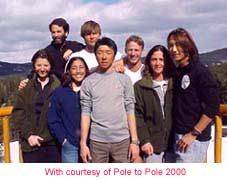 respect each person's different culture and, last but not least, are in superb physical condition. "I have to admit on the other hand that I am extremely impressed by their almost natural ability to measure up to the challenges that arise and that are thrown at them every day. For me, finally to see the dream come true is astonishing, and to see the way in which these young people can remain so well-balanced from one challenge to another, being faced with extreme physical fatigue and mental stress, while experiencing intense emotions, is a truly unforgettable experience…"
respect each person's different culture and, last but not least, are in superb physical condition. "I have to admit on the other hand that I am extremely impressed by their almost natural ability to measure up to the challenges that arise and that are thrown at them every day. For me, finally to see the dream come true is astonishing, and to see the way in which these young people can remain so well-balanced from one challenge to another, being faced with extreme physical fatigue and mental stress, while experiencing intense emotions, is a truly unforgettable experience…"  the capital of the Yukon. The small conferences that the group organised were attended by more than 300 young people, which proves that the adventure that these members of the Pole to Pole 2000 team are living and the spirit that is liberated by this fantastic experience is of great interest to those who want things to change.
the capital of the Yukon. The small conferences that the group organised were attended by more than 300 young people, which proves that the adventure that these members of the Pole to Pole 2000 team are living and the spirit that is liberated by this fantastic experience is of great interest to those who want things to change. 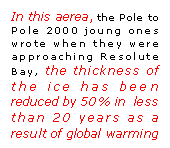
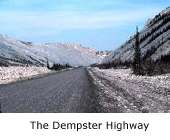
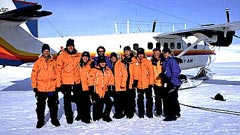
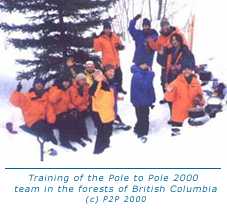 same version about the condition of the ice was given to us by
same version about the condition of the ice was given to us by